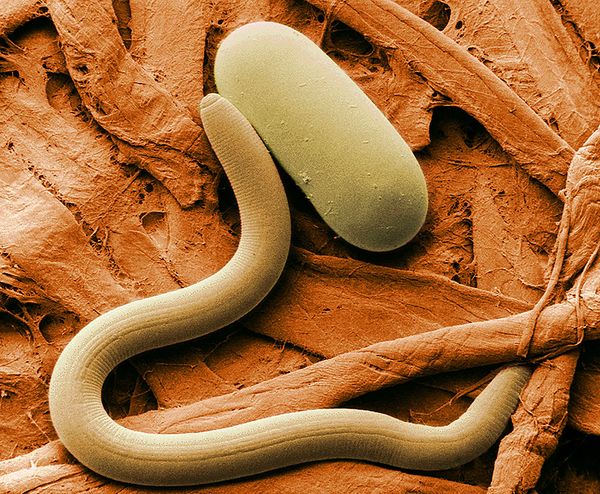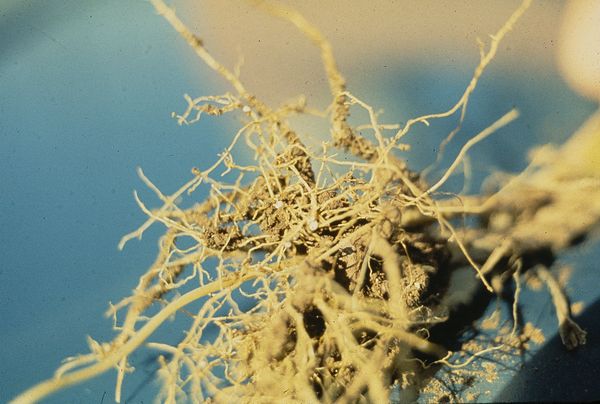- They are small and one of the least-known pests attacking cannabis crops, although they may be found in other kinds of plantations, and even in animals. Nematodes attack the roots of plants and slow their growth, and can even kill them.
- The use of insecticides and pesticides, as well as replenishing your substrate, can help eliminate them. Ironically, however, there are also good nematodes that will benefit your cannabis. A group of worms was never so associated with your favourite plant.

Their vermiform appearance may remind you of tapeworms. They do not reside in your stomach, but they are not exactly friendly either. Nematodes are another of the pests that can affect your cannabis crops and lead to more than a few disappointments.
Nematodes are commonly known as roundworms, due to the shape of their bodies viewed in a cross section. Of the 25,000 recorded species, 50% function as parasites on plants, insects and other animals. They are of different sizes, from 0.2 mm to 8 meters, such as the Placentonema gigantissima, which live in the placenta of the female sperm whale. However, most are usually around 2.5 mm, which makes them difficult to detect with the human eye. They feed on fungi, bacteria and other organisms in the earth. And what's worse: plant cells. Interestingly, sometimes they can actually be beneficial. The benign ones can kill other plant pests, such as thrips and larvae.
There are several species of "bad" nematodes that can attack parts of plants, such as bulbs and stems. The nematodes we should worry about most are those that attack the roots of the cannabis plant and others, such as cereals. They swell or atrophy them in such a way that they cannot develop, besides giving them a rougher texture. Sometimes they even kill them completely. If they don't, at least they slow their growth or performance, and cause their leaves to wilt. This leads many growers to think they have a nutrient or moisture problem, and they worry even more when they apply remedies for these problems, but to no avail. Unlike other pests, nematodes are more difficult to control.

Although there are several kinds of nematodes that attack roots, there is also one that attacks the stem: Ditylenchus dipsaci. The symptoms that can be observed on stems, branches and petioles (the part of the leaf attached to the stem): they all swell and show signs of chlorosis, a disease evidenced by the yellowing of the green parts. Later the stems become twisted and deformed.
What to do
To prevent these small worms you must take preventive action with some type of product. There are fungicides and insecticides that can help you to do so, and that also work against other pests. Products like Laotta and Skunk Neem are effective against nematodes, but also against mites, aphids and whiteflies. Both are applied to the leaves, diluted in water. In general, products with neem oil, mixed with the substrate, can help eradicate them. Another option is Trichonema Prot-L, which also helps to germinate plants and reactivate the soil.
You can also turn to bacteria, such as Pasteuria penetrans, which prevents worms from developing. The bacteria produce enzymes that destroy eggs or kill the larvae in their early stages of life. You can even turn to mushrooms: Arthrobotrys oligospora and Entomophthora gypsophila are capable of destroying nematodes once they have already developed. Meanwhile, the genus Verticillium can destroy eggs or females.
If you have noticed that your roots are affected by nematodes, you have no choice but to change your substrate and start fresh with a new one, and then proceed to follow these tips to prevent them from appearing again. Another measure to prevent the pest's appearance is to borrow a page from the ways of farmers in the old days, and turn to fallow soil: in rotated or replenished earth it does not tend to appear. This must be taken into account for outdoor crops. If you are growing indoors, it is best is to change the entire substrate with each new planting.
You also have to keep an eye on your water. Nematodes usually live in thin sheets of water that can be found in soils, so avoid any standing water. Water is also the means by which they move, so you'll want to stir your soil, as they are very comfortable in sandy or very porous textures.
Beneficial nematodes
As we have already said, there are also beneficial nematodes, which can actually enhance your cannabis plantation. Commercially they come in a sponge or any other porous container, and must be refrigerated until used. When that time comes, they are placed in warm water, with or without fertiliser. The mixture is then sprinkled on the soil. Very few nematodes should be placed in the water, because they breed prolifically once there. When they are spread across the surface they get down to work, multiplying and consuming larvae, fungi, spores... Nematodes can be applied as many times as you like, but once or twice a month will suffice.
An example of a beneficial nematode against other pests affecting the cannabis plant is Steinernema feltiae. Specifically, you can use it to combat the substrate fly, found at the base of plants and near humid areas.
And, if that may seem ironic, there's even more. Cannabis, once grown, can help to eradicate some nematodes. For example, cannabis preparations can be used as a repellent and pesticide against nematodes affecting plants like potatoes and soybeans. According to studies conducted in Uganda, the plant also acts against Ascaris suum, an intestinal nematode affecting humans and pigs. The case of the aka people is also known, a pygmy tribe of hunters and gatherers living in the Congo Basin.
Recently researchers at Washington State University studied how these people use cannabis to prevent intestinal parasites. After interviewing 400 adult members and conducting analyses to quantify the presence of THC in their blood, they found that 70% of men and 6% of women regularly consumed it. Their findings concluded that the akas have become accustomed to cannabis after realising that those who smoked it the most were least infected with parasites.
In short, nematodes are very hazardous, but there are also certain kinds that can help you improve your cannabis crop. Knowing about their good and bad sides will help you get the best results from your buds. You never knew a bunch of worms could be so versatile, did you?



Comments from our readers
Read comments in other languages:
Did you like this post?
Your opinion about our seeds is very important to us and can help other users a lot (your email address won't be made public).